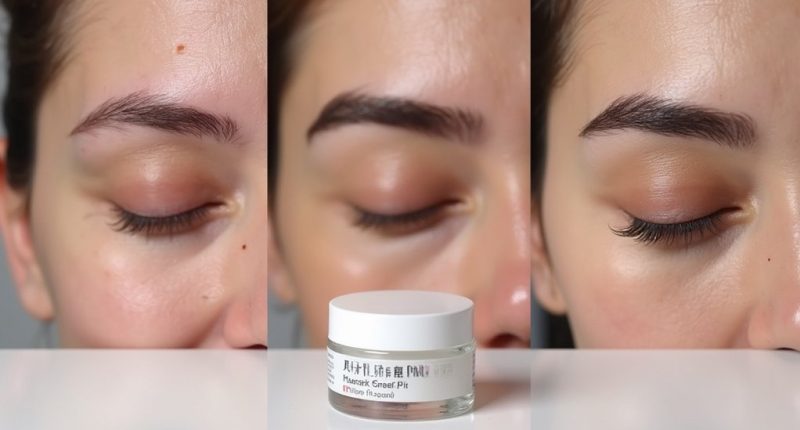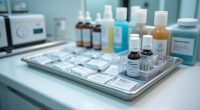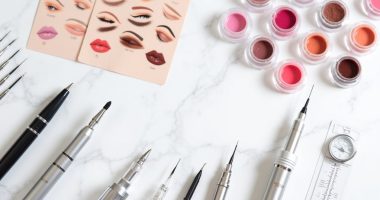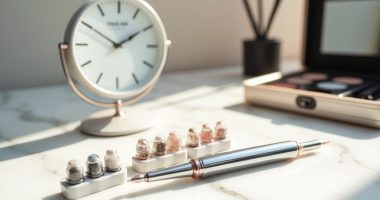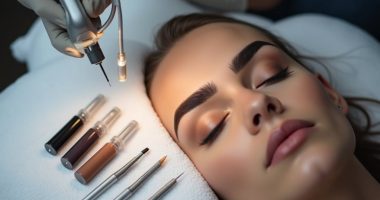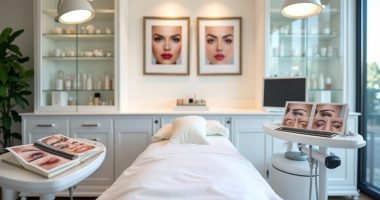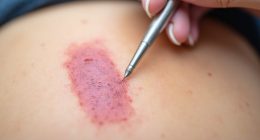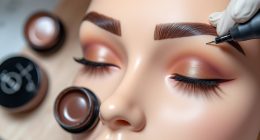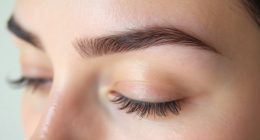Permanent makeup healing follows five distinct stages. Days 1-3 bring swelling and darkness. Days 3-10 involve scabbing and flaking—don't pick! Between days 10-14, most scabs fall off naturally as color settles. Weeks 2-6 reveal the true results as pigment lightens up to 70%. The entire process takes patience. No shortcuts exist; your body needs time. The complete transformation journey reveals why touch-ups are sometimes necessary.
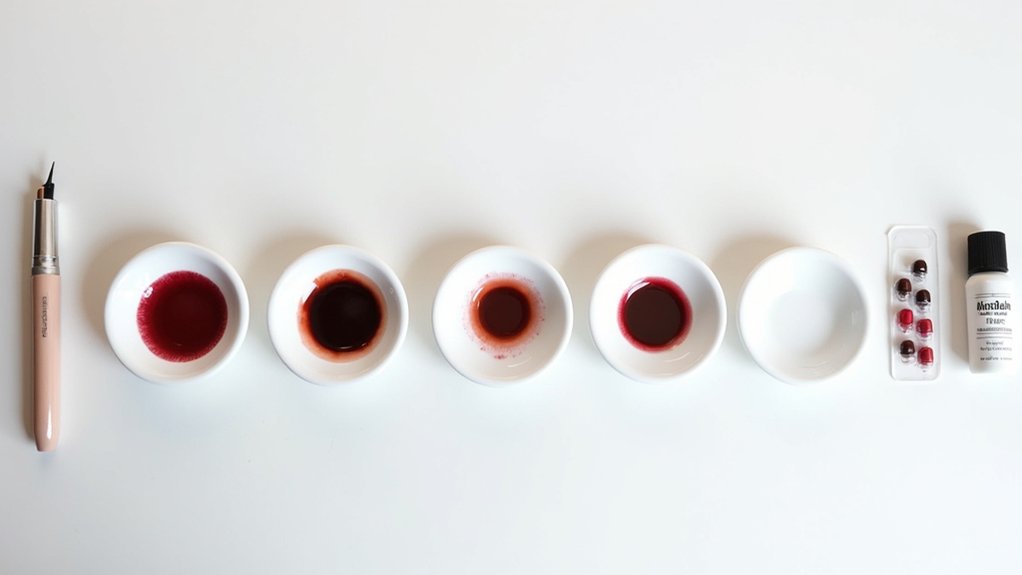
When it comes to permanent makeup (PMU) procedures, healing isn't just a waiting game—it's a journey. The healing timeline involves several distinct phases that every client must endure before seeing their final results. Each stage serves a purpose in the skin's natural regeneration process. No shortcuts exist. Your body needs time to process the pigment and recover from the micro-injuries created during the procedure. Proper skin care during this period isn't optional—it's vital.
Those first few days post-procedure? They're intense. Swelling and redness appear immediately, making the treated area look angry and irritated. The color? Much darker than you bargained for. Don't panic. This is normal. The pigment darkens within hours as it oxidizes on the skin's surface. Your skin feels tender, perhaps even throbbing slightly. Water is the enemy right now. Keep it dry. Period.
By days three to five, things look worse before they get better. Scabs start forming—nature's bandages. The skin feels tight, maybe itchy. Flaking begins. It's tempting to pick at those scabs. Don't. Seriously. Unless you enjoy patchy, uneven results. The darkening continues as oxidation progresses. Not your best look, but necessary.
The next phase brings relief and anxiety in equal measure. Between days five and ten, scabs flake off naturally. The area looks patchy and faded—sometimes alarmingly so. Many clients freak out at this stage. The color seems to have disappeared! It hasn't. It's just hiding beneath new skin cells. Itching intensifies. Still, no touching. Avoiding swimming pools and sun exposure during this period is crucial to prevent premature fading and potential infections.
Days ten through fourteen mark a turning point. Most scabs have fallen off. The color begins settling into something more natural. Swelling? Gone. Redness? Minimal. Normal skincare routines can typically resume. Progress, finally.
Weeks two through three bring more lightening as skin regeneration continues. The pigment may look 50-70% lighter than initially applied. Individual strokes become more defined. Surface healing completes. The worst is over.
By weeks three to four, the true color resurfaces. The treated area regains most of its intensity. Any patchiness becomes more obvious. This is when you know if a touch-up is needed. For lip procedures, continuing to apply protective balm frequently will help maintain moisture and enhance healing results. Remember that using natural ingredients like those found in MicroBalm rather than petroleum-based products provides better healing benefits.
Final healing occurs between weeks four and six. The color stabilizes. The shape settles. Sun protection becomes essential for maintaining results. The journey ends. Your new look begins.
Frequently Asked Questions
Can I Wear Makeup During the Healing Process?
No makeup during PMU healing. Period.
Clients must keep treated areas completely makeup-free for 7-14 days minimum, depending on the procedure type.
Makeup types of any kind – even the "gentle" ones – introduce bacteria and interfere with pigment retention.
Only approved healing products should touch the area.
Sounds tough? It is.
But shortcuts lead to infections, poor results, and wasted money.
The wait is non-negotiable for successful outcomes.
How Do I Handle Accidental Water Contact With My PMU?
Accidental water exposure happens. It's not the end of the world. If PMU gets wet, don't panic. Simply pat the area dry—gently. No rubbing!
Then apply any recommended aftercare ointment. Water isn't ideal during healing, but a quick splash won't ruin everything. Monitor the area for signs of irritation afterward.
The real enemy? Those long, steamy showers some people can't seem to live without. Follow proper healing tips and the pigment should survive just fine.
Is Itching Normal During PMU Healing?
Yes, itching is completely normal during PMU healing. The body's natural response to those tiny needle pokes.
Itching causes include scab formation, inflammation, and nerve stimulation as skin repairs itself. Nothing to panic about!
The healing timeline typically shows itching starting 3-5 days post-procedure, peaking around days 5-7.
Might stick around for up to two weeks. Everyone's different though.
Just don't scratch it, no matter how tempting. Seriously. Don't.
When Should I Schedule a Touch-Up Appointment?
Touch-up timing depends on several factors, but most PMU artists recommend scheduling 4-8 weeks after the initial procedure.
This window allows for complete healing and pigment settling. Simple as that.
Scheduling tips? Mark your calendar now – don't wait until the last minute. Oily skin types might need earlier appointments, while mature skin can sometimes wait longer.
Everyone's different. And hey, those annual refreshers? They're not just a money grab. Results fade. That's life.
Can Medications Affect My PMU Healing?
Yes, medications can dramatically impact PMU healing.
Blood thinners? Major bleeding risk and poor pigment retention.
Antibiotics disrupt natural healing processes—not ideal timing.
Acne meds like Accutane? Forget about PMU for a whole year after.
Medication interactions can extend healing duration or completely wreck results.
Immunosuppressants might leave you with patchy, faded work or, worse, an infection.
The body's response to PMU with medications on board? Unpredictable at best, disastrous at worst.
